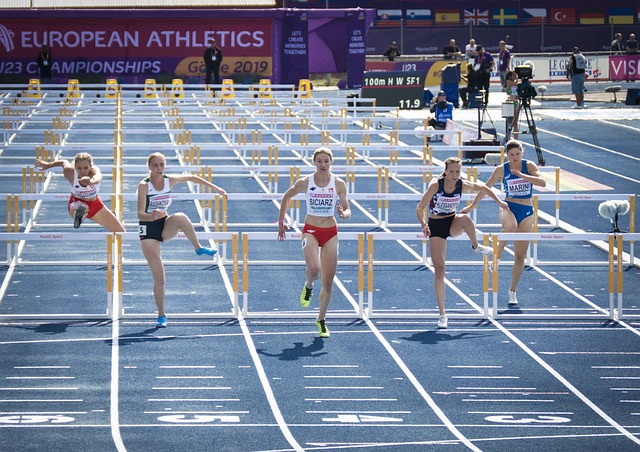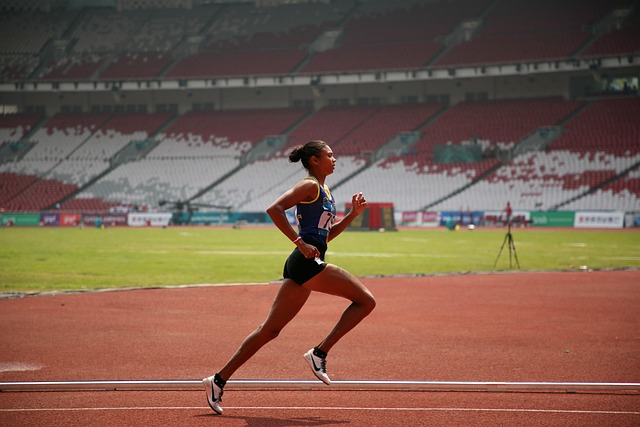Injury recovery therapy offers a holistic approach for athletes, addressing mind, body, and spirit to optimize performance and speed up recovery. By integrating techniques like massage, acupuncture, nutrition counseling, mental training, and natural therapies, this method reduces inflammation, promotes tissue repair, enhances flexibility, and boosts mental resilience. Personalized interventions enable athletes to return to their sports with improved strength, lower injury risk, and enhanced overall well-being, making holistic regenerative medicine a transformative tool for long-term athletic success.
In today’s competitive athletic landscape, holistic regenerative approaches are transforming performance and recovery. This article delves into the multifaceted world of holistic regenerative medicine tailored for athletes, exploring its potential to revolutionize sports rehabilitation. From understanding the core principles to examining innovative techniques like injury recovery therapy, we dissect strategies that foster optimal athletic performance and accelerated recovery. Join us as we uncover success stories and real-world applications that demonstrate the power of a mind-body connection in sports.
- Understanding Holistic Regenerative Medicine for Athletes
- The Role of Injury Recovery Therapy in Sports Rehabilitation
- Techniques and Practices for Optimal Athletic Performance
- Integrating Mind-Body Connection for Faster Recovery
- Case Studies: Success Stories of Holistic Approaches in Athletics
Understanding Holistic Regenerative Medicine for Athletes

Holistic regenerative medicine for athletes is a comprehensive approach that goes beyond traditional treatment methods, focusing on the whole individual—mind, body, and spirit. It recognizes that athletic performance and recovery are deeply intertwined with overall health and well-being. By integrating various therapies such as massage, acupuncture, nutrition counseling, and mental training, this holistic approach aims to optimize injury recovery therapy while enhancing athletes’ resilience and endurance.
This regenerative approach views injuries not just as physical setbacks but as opportunities for growth and improvement. Through tailored interventions, athletes can accelerate their recovery timelines, reduce inflammation, and promote tissue repair. Ultimately, it empowers them to return to their sports with enhanced strength, flexibility, and mental fortitude, ensuring long-term performance and injury prevention.
The Role of Injury Recovery Therapy in Sports Rehabilitation

Injury recovery therapy plays a pivotal role in the holistic approach to sports rehabilitation, offering athletes a natural and effective way to regain strength and mobility after injuries. This therapeutic method goes beyond traditional treatments by focusing on the entire body’s systems—musculoskeletal, circulatory, and nervous—to promote healing from within. By stimulating the body’s inherent ability to heal itself, injury recovery therapy accelerates the recovery process, reducing dependence on medication or invasive procedures.
This type of therapy employs various techniques such as manual manipulation, targeted exercises, and specific nutrition strategies to create an optimal environment for tissue repair. The personalized nature of these treatments ensures that athletes receive tailored care aligned with their unique needs, fostering a more efficient and comprehensive recovery journey. As a result, athletes can return to their sports with enhanced performance, reduced risk of future injuries, and improved overall well-being.
Techniques and Practices for Optimal Athletic Performance

Holistic regenerative approaches for athletes go beyond traditional training and nutrition. Techniques such as injury recovery therapy, including strategies like cold and heat therapy, massage, and compression, play a crucial role in optimal athletic performance. These methods aid in reducing inflammation, accelerating muscle repair, and enhancing overall recovery, allowing athletes to push their limits without compromising health.
Additionally, practices like mindfulness meditation, proper sleep hygiene, and dietary interventions focused on whole foods contribute significantly to an athlete’s holistic well-being. By integrating these regenerative techniques into their routine, athletes can not only improve their physical performance but also maintain mental resilience and overall longevity in their sport.
Integrating Mind-Body Connection for Faster Recovery

In the pursuit of peak performance, athletes often overlook a crucial aspect of holistic wellness: the mind-body connection. This intimate relationship plays a pivotal role in injury recovery therapy. By integrating practices that foster mental and physical harmony, athletes can accelerate their return to competition. Mindfulness meditation, for instance, helps reduce stress hormones, allowing the body to redirect energy towards healing processes.
Additionally, techniques like yoga and tai chi improve blood circulation and flexibility while promoting a sense of calm. These activities encourage athletes to listen to their bodies, enabling them to identify and address signs of overexertion early on. Such holistic regenerative approaches not only expedite recovery but also enhance overall athletic performance by nurturing both the mind and body.
Case Studies: Success Stories of Holistic Approaches in Athletics

In the realm of athletics, holistic regenerative approaches have emerged as game-changers, revolutionizing how athletes manage injuries and enhance performance. Case studies abound, showcasing successful implementations of these methods. For instance, elite runners have benefited from injury recovery therapy combining myofascial release techniques with targeted stretching regimens, leading to faster return times without compromising future performance. Another compelling story involves professional basketball players who, through a holistic approach integrating mindfulness practices and nutraceutical interventions, experienced reduced inflammation and improved recovery rates after intense training sessions.
These success stories highlight the multifaceted nature of holistic regenerative strategies. By addressing not just physical symptoms but also mental resilience and nutritional needs, athletes are empowered to achieve optimal health and peak performance. As these approaches gain traction, more athletes are discovering a new level of well-being, defying traditional boundaries and setting new standards in their respective sports.
Holistic regenerative approaches, encompassing injury recovery therapy, mind-body connection practices, and innovative techniques, offer athletes a revolutionary path towards optimal performance and accelerated recovery. By integrating these methods into sports rehabilitation, athletes can experience enhanced well-being, improved athletic outcomes, and a deeper sense of balance. As evidenced by successful case studies, embracing holistic regenerative medicine empowers athletes to push boundaries, overcome challenges, and achieve new heights in their sporting endeavors.
